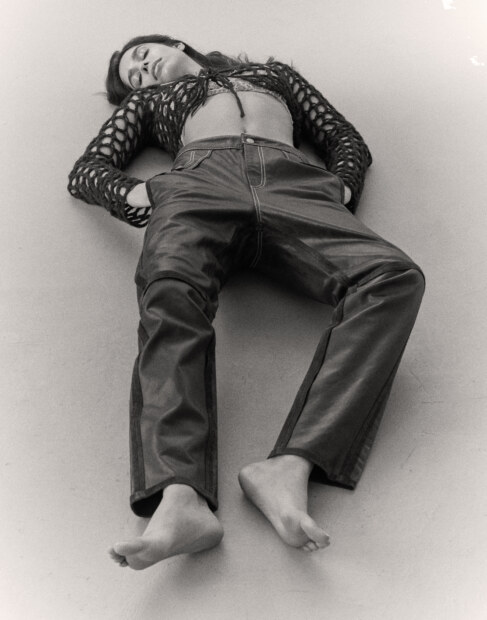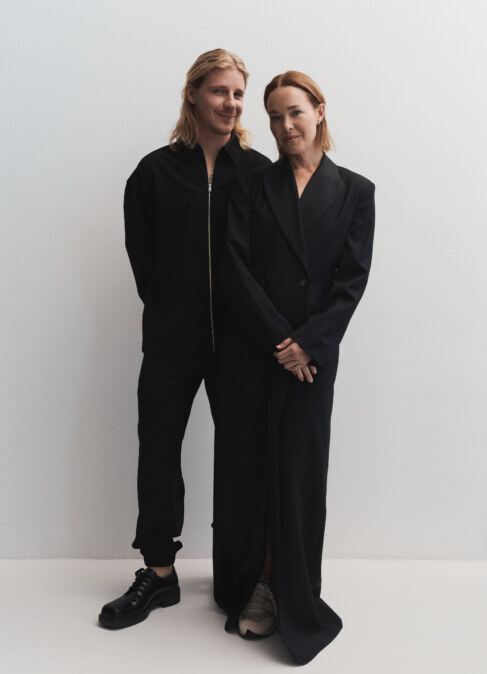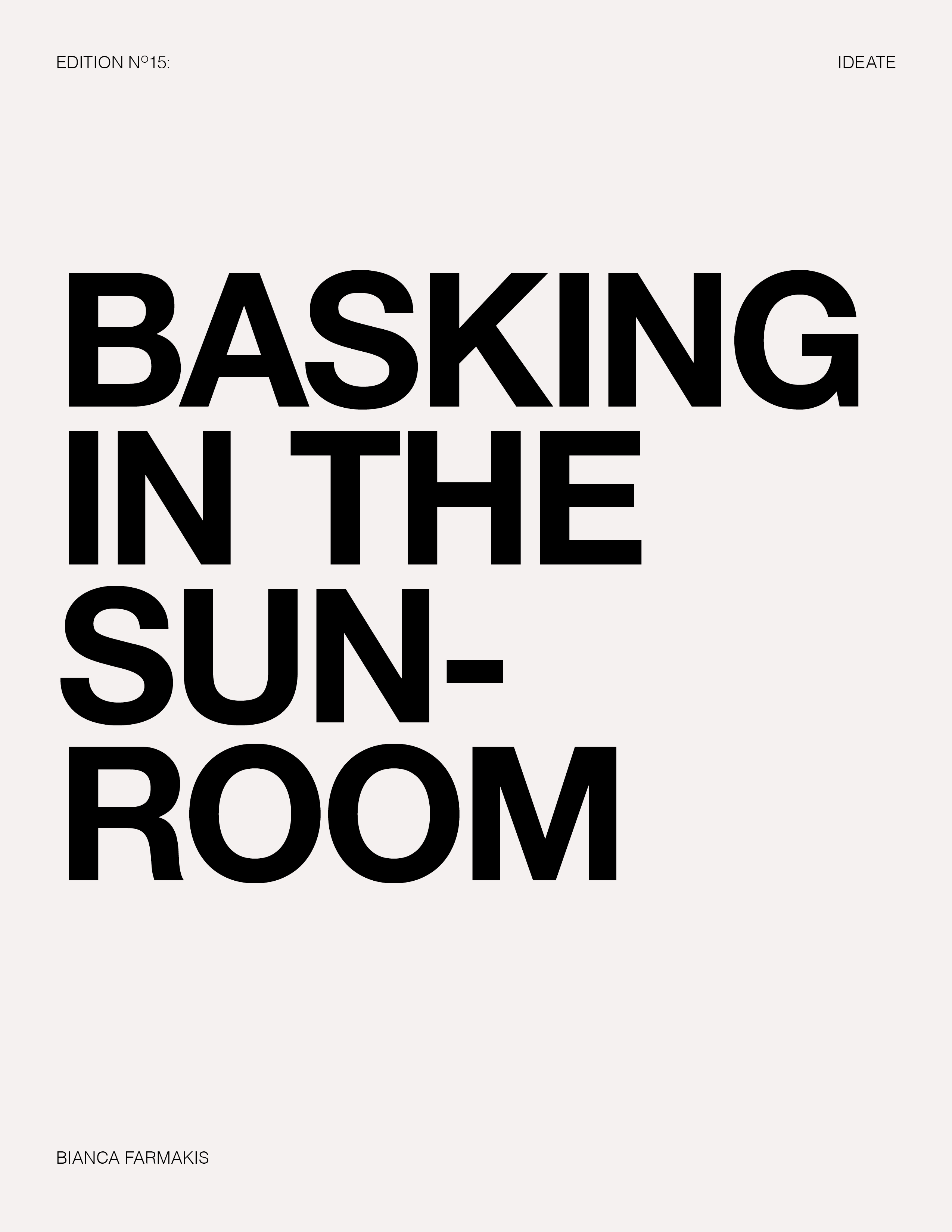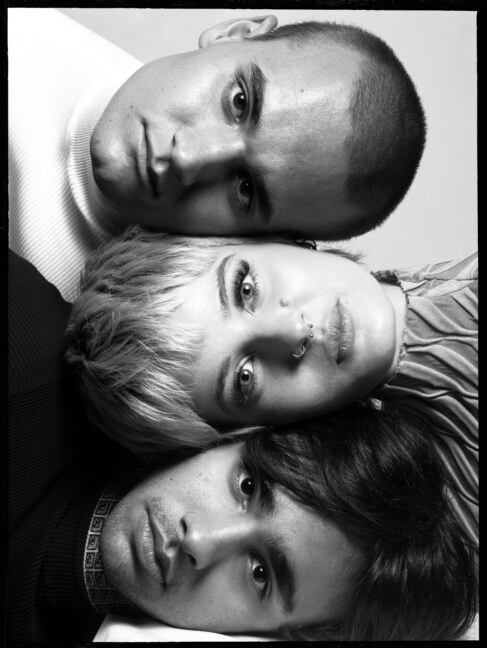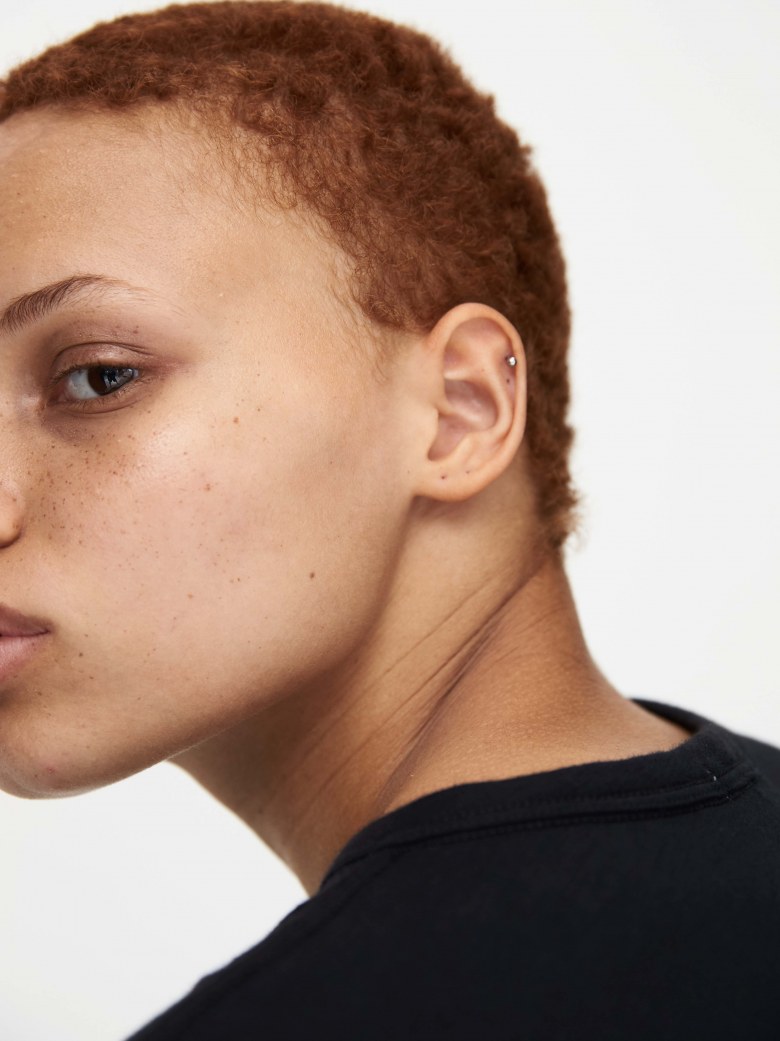
Acne Studios tee shirt, $300, acnestudios.com
In This Day and Age by Tatiana Farley
PHOTOGRAPHER: James Nelson
STYLIST: Emma Kalfus
HAIR AND MAKE UP: Claire Thomson @ Company1
TALENT: Billie Smolsy @ IMG
The fleeting, almost mystical quality of youth has become one of those grandiose, romanticised ideals whose appeal, rather ironically, is ageless. Take its commercial treatment for example, a flickering slideshow of frolicking under sprinklers, ice cream dribbling down sticky fingers and the rollercoaster ride of pubescent hormones. The notion of fumbling first kisses, endless summers and exams (cue: eye roll) perfectly perpetuates the naive bliss of youth, a theme that has been used as a surefire way to push everything from soft drinks to swimwear. Conversely, there is the underbelly of youth; all at once brooding, misunderstood and nonchalant. The kind of teen angst that every grunge band and Depp/Moss tragic has drawn upon since the almighty rise of chokers (the first time around). Question is, do the rules still apply? Have we outgrown the youth of yesteryear?

Ellery top, $750, ellery.com | Bottega Veneta skirt, $4830, (02)92390188 \ Rag & Bone sandals, $710, incu.com
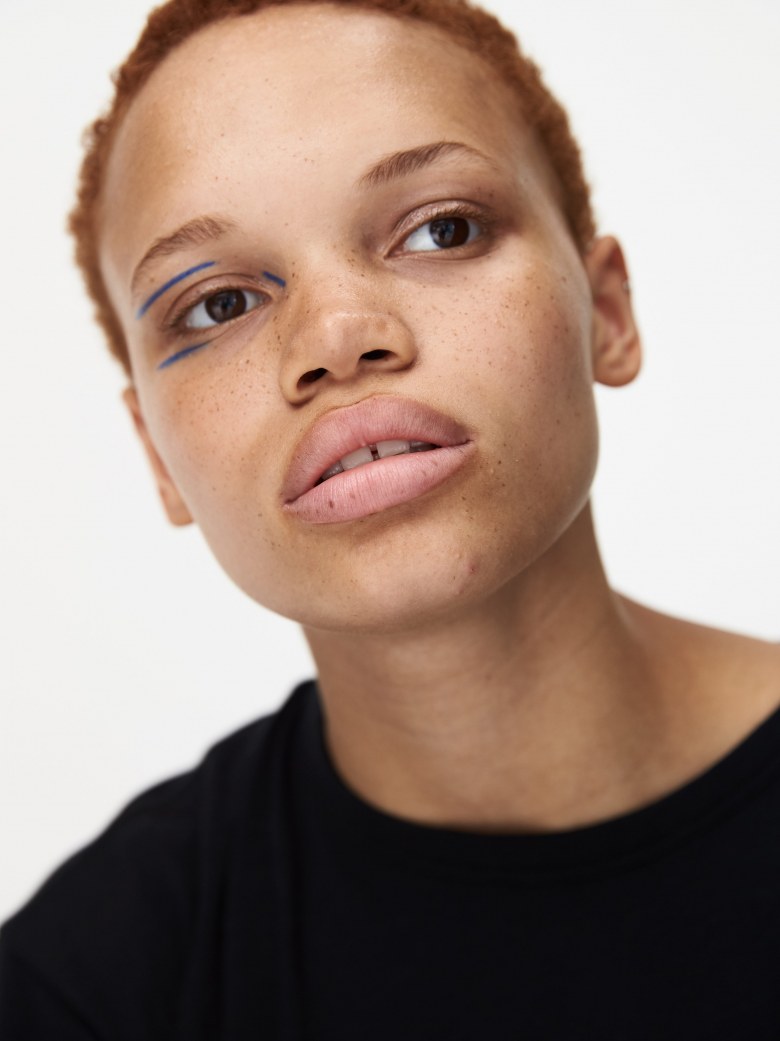
Acne Studios tee shirt, $300, acnestudios.com
Ask anyone who has come out the other side and you’ll find it doesn’t really adhere to the well-worn pattern that sitcom re-runs would have you believe. Even the Oxford Dictionary can’t quite decide on one sweeping statement. Among its definitions, ‘the period between childhood and adult age’, ‘the qualities of vigour, freshness or immaturity’ and ‘an early stage in the development of something’. The space in-between is perhaps a more poetic way of looking at it. It is this very space, bookended by the polar expectations of dependence and independence, that has become lost in translation of late.
Enter the advent of social media kindling a boom in both self and global awareness and, just like that, you have a different breed of in-betweener. To attribute change to digital socialisation is cliché, yes, but justified. Just as the dawn of telephone, radio and MTV nuanced the dynamic of culture in decades past, so too has the information age. With a constant stream of peer approval, global updates, keyboard warfare and hashtag revolutions, they are processing infinite newness at lightning speed. Punk rock prodigy Patti Smith astutely observed, “Who can know the heart of youth but youth itself.” Since social media brought self-portraiture to the masses, the youth of the now evade commercial or academic classification, for it is them telling us exactly who they are and just how it is. We are indelibly shaped by the zeitgeist and when youth grow up marketing themselves to the world, it’s no wonder they care deeply about the brand they want to be.
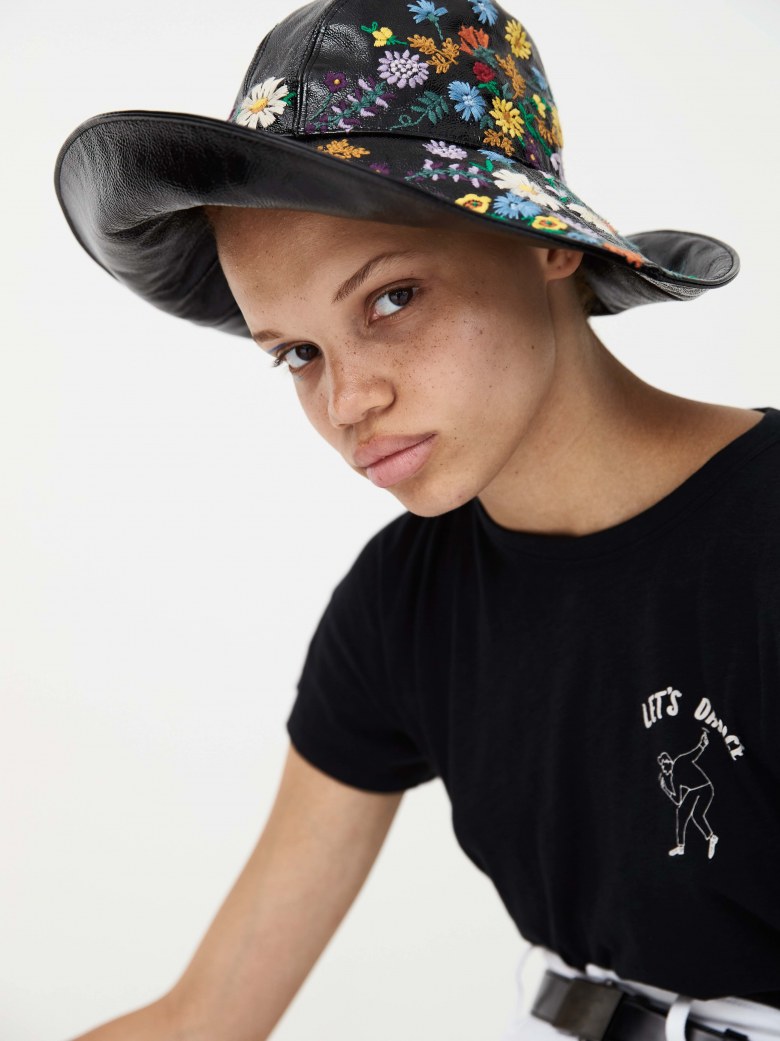
Rag & Bone tshirt $125, rag-bone.com | M.i.H. jeans, $385, edwardsimports.com | Prada belt, $600, prada.com | Gucci hat, $1629, gucci.com
Upon accepting the Cecil B. DeMille accolade at the 2018 Golden Globes, Oprah Winfrey flawlessly encapsulated the #MeToo movement’s raison d’etre, “What I know for sure is speaking your truth is the most powerful tool we all have.” The line between championing one’s truth and hyper self-conscious narcissism is a tricky one to tread. How do we encourage self-acceptance without promoting the unbridled pursuit of acceptance? Like all tools, these platforms for self expression are useful in moderation, dangerous in excess. Being the first to navigate the digital revolution means there are no precedents, no sage advice for a life lived in microcosm. With no one to hold their hand, how our youth ultimately grows up is a story only time can tell.
For all its brimming potential, there is a bleak side to this new reality. Never before has a generation been so connected yet lacking in meaningful connections. The substitution of screens in lieu of self has given way to a new kind of isolation; less angry than the 90’s but more lonely. Quantity has replaced quality whilst the compassion and camaraderie of togetherness is lost in the interweb. The one dimensional world of the device has meant a perennial pursuit of validation, be it selfies, squats or pancakes – nothing is sacred. Just as the youth of today have a louder opinion of the world around them, so too does the outside world inform their own sense of self.
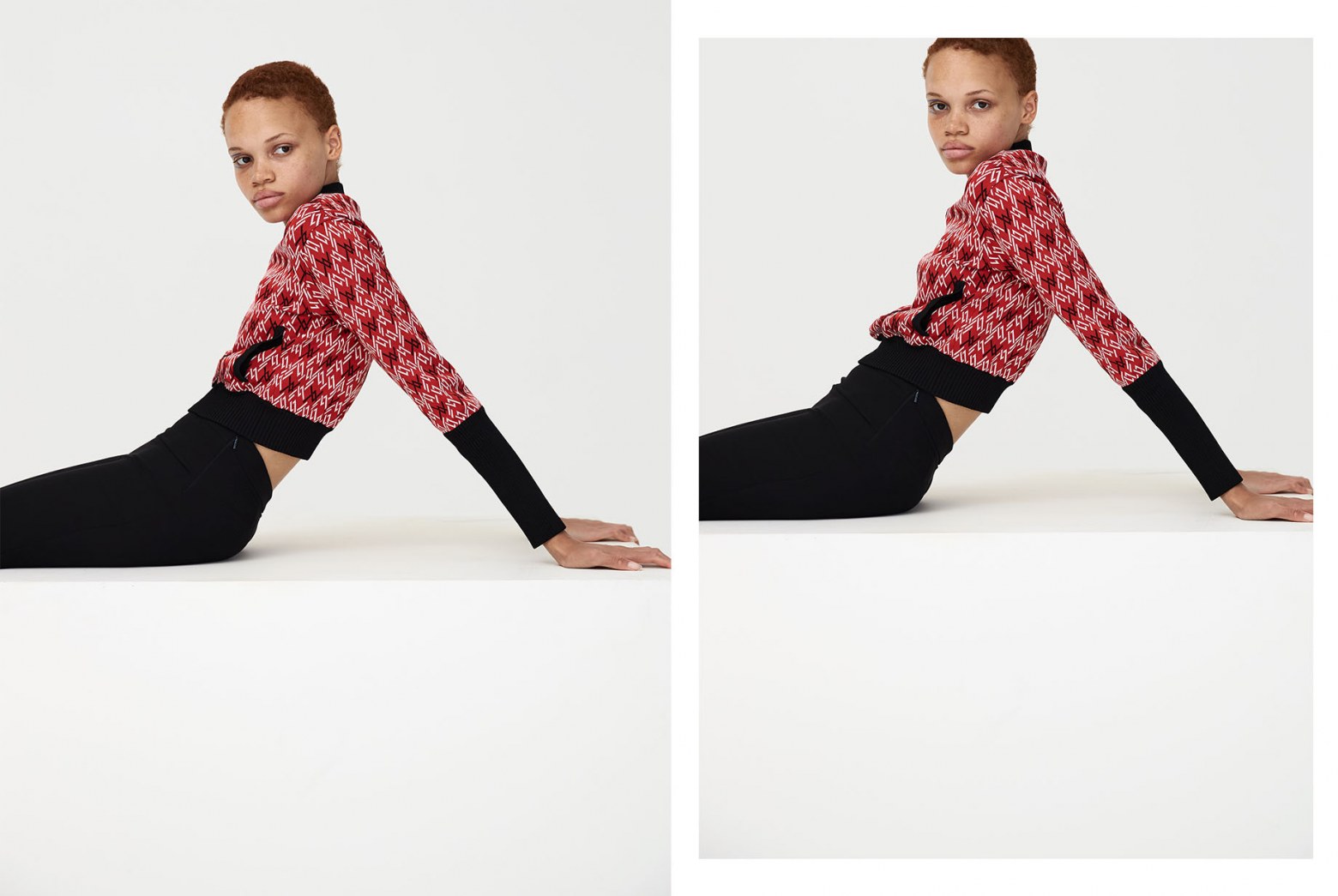
Louis Vuitton bomber jacket, $3050, louisvuitton.com.au | Sportmax pants, $585, sportmax.com
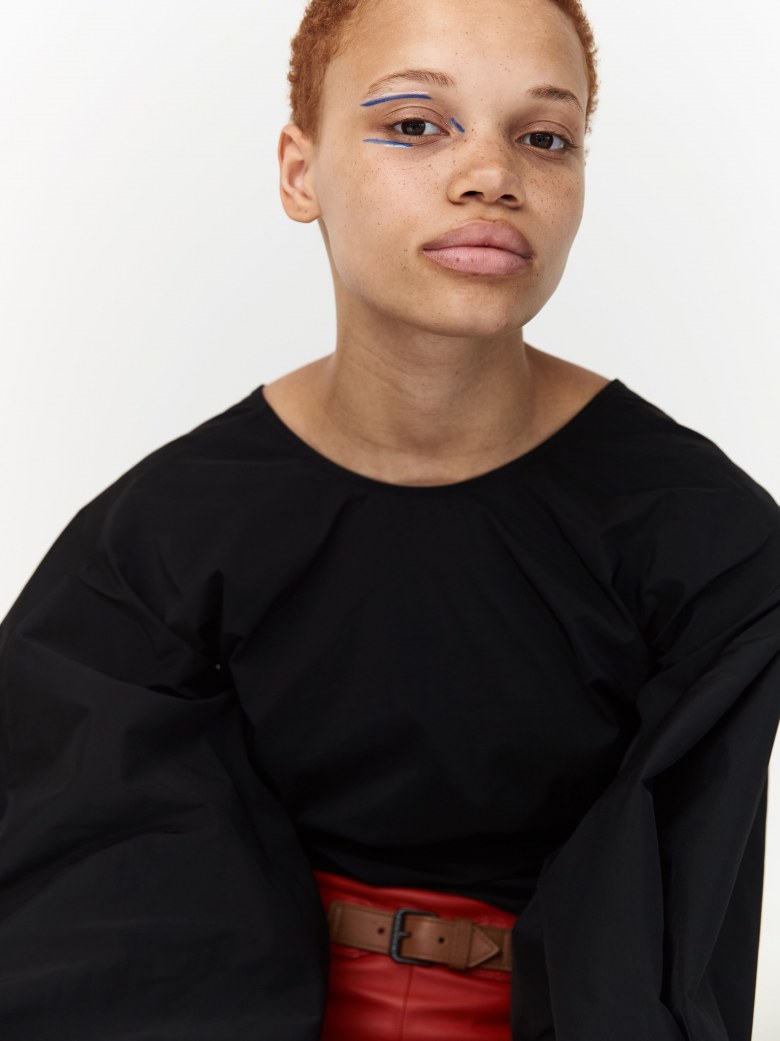
Ellery top, $750, ellery.com | Bottega Veneta skirt, $4830, (02) 92390188
With appearances to keep up, gone are the days of rebellion for rebellion’s sake. There is a steely boldness, a heightened empathy and a consciousness that perhaps there wasn’t before. Today, there lies a conviction beneath the chaos as teen crusaders are juggling not one, not two, but an army of causes that either mean something to them or, often more importantly, their sense of identity. The ‘speak out’ culture where victims are championed rather than hushed has thwarted the thinking that ‘ignorance is bliss’ and galvanised a generation. Too cool for school has suddenly become it’s cool to care. The democratic nature of digital has given youth a platform to affect change that is agnostic of age, qualification or status. This lack of hierarchy has given the young a kind of power, and with that, a sense of responsibility that generations past did not know. Free from the bias of experience, but heavy with the onus of knowing and caring too much, they mean business.
In an interesting twist of fate, the world wide web sure has done exactly as its moniker promised, it has simultaneously broadened and cohered the global dynamic. Digital may have skewed the line of what’s real and what’s not, what matters and what doesn’t, but it redeems itself by celebrating the uncommon and emboldening the outsider. Increased awareness has, in turn, increased acceptance. It is this more open minded arena that has embraced minorities, fostered the renaissance of individualism and recalibrated societal norms. Everything from fundamental human rights to ideals of beauty, with the internet’s assistance, have undergone paradigmatic makeovers. With so many variables filtering their reality it’s no surprise the youth of today look and feel a little different than before. The moody, carefree and indifferent youths of yesterday have grown up. In a flat world where knowledge is power and unusual is in, the ‘freshness’ and ‘vigour’ of youth means those just starting out are the ones rewriting the rules.
